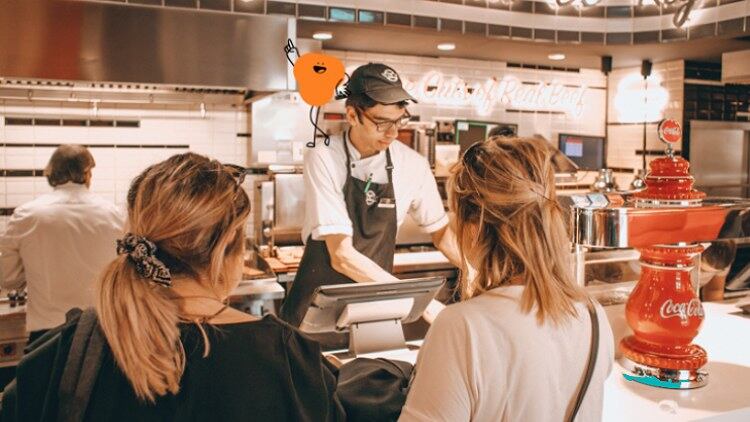Tenzo introduces Restaurant PerformanceOps to supercharge performance, creating a sustainable and successful industry

Operators get into the hospitality business because ultimately they want to provide just that: hospitality. Unfortunately, the realities of running a restaurant mean dealing with a lot of external factors that can’t be controlled. We want to see operators get back to doing what they love by gaining access to the information they need to thrive and not just survive.
After three years of battling unprecedented external challenges, it’s never been more important for restaurants to keep an eye on performance. But getting a holistic view of performance at any given moment, without overwhelming the team with too much data, is no mean feat.
Here are Tenzo’s tips for monitoring performance and maximising profits along the way.
1. Understand what success metrics you need to track
What does success mean? Every F&B business is different and while a metric like time to serve or cost of labour as a percentage of sales may be most important for one, average transaction value or percentage of purchases wasted might be most important to another.
For QSR or fast casual businesses, high labour productivity (or sales per labour hour) might be something operators want to focus on. If that’s the case, it’s important to think about what elements to track - is it how many bowls or burritos have been prepared per hour per team member or is looking at overall revenue a better metric?
It could be that a business wants to be as efficient as possible when it comes to labour deployment. Considering four in five restaurant businesses are currently understaffed, having more team members on the clock at the busiest times and not sitting around during quiet times is absolutely essential.
Instead of just thinking of labour cost as a percentage of sales, operators might want to look at labour spread across the week or month compared to the sales spread. They should match up so the days when more sales come in, more labour spend is being allocated. If these spreads don’t match, operators will know that deployment isn’t as efficient as it could be.
If efficiency is the goal, businesses should look at food cost and waste in particular. Measuring theoretical vs actual usage can provide a real insight into whether recipes are being followed correctly or if portion sizes are creeping up. Having a consistent view over this avoids surprises at the end of the month when suddenly the cost of goods as a percentage of sales skyrockets.
The most important thing is for operators to think about the KPIs that matter most to their business, choosing three to five to focus on, and then carefully tracking to see how they are performing against them.
2. Access real-time data
Tracking metrics is all well and good, but if a business doesn’t have access to data in real-time their ability to solve issues before they affect business is close to none. Getting reports on a weekly or monthly basis means that it’s often too late to influence performance.
Being able to reflect on real-time information allows teams to make quick changes to better reach success metrics.
For example, if the attachment rate for one of an operator’s sides or drinks has dropped during the first hour of lunch service, managers can encourage the team to upsell more of them in the second hour, stopping a lower revenue service in its tracks.
Alternatively, seeing real-time average transaction values by employees can also quickly show who could use more training to bring up overall performance.
Having that data easily accessible during busy service hours is even more important, so choosing a tool that has mobile on-the-go capabilities is key.

3. Don’t silo your data in teams or systems
On that note, everyone in the business should have access to this real-time information. There’s no sense siloing operational data in head office if it’s the on-the-ground teams that need to be the ones making quick decisions.
Everyone should always be on the same page and should be speaking the same reporting language so that no miscommunications happen which can hurt the business’s profits. Having one source of truth is the way to solve this issue and it’s extremely important that that source is trusted by everyone in the business, and that the data is never questioned.
Similarly, nowadays the number of technology systems in restaurants can mean that information is siloed in distinct systems with no way of comparison. Using a Restaurant PerformanceOps tool to aggregate disparate data streams means operators can easily compare information and get a much more holistic view of their business’s performance.
4. Track trends over time
Aggregating all data allows operators to easily see trends over time. Often having a topline metric isn’t enough. A business might be able to say that its cost of goods as a percentage of its revenue is 35%, but what was it at the same time last year? Is it possible to track price changes in individual ingredients and make adjustments based on that information?
By being able to dive deeper and see the effects of decision-making over time, operators can find opportunities to improve performance. These little changes can also add up. For example, if an operator notices they are consistently understaffed for one shift a week, by adding in an extra labour hour, they may find customers are served much faster, leading to happier customers, better reviews, and ultimately more sales.
5. Forecast the future
When it comes to restaurant performance, following the Scouts’ motto ‘Be Prepared’ is always a good idea. Businesses knowing what’s is coming their way means they can be properly prepped and ready. A Restaurant PerformanceOps tool that leverages AI to predict future sales can make sure venues are ready for the rush that comes with school holidays, big sports fixtures, a change in the weather, or whatever other input that can affect sales.
Having access to an accurate forecast means businesses can order the correct amount of stock that avoids stockouts as well as excess waste, schedule the right number of staff and never have to call someone in at the last minute or send someone home early.
Understanding the peaks and troughs in future sales helps operators accurately measure performance and not get caught out thinking sales are unnaturally high or low.
Make sure to check out Tenzo’s ultimate guide to restaurant performance to help your business shift from surviving to thriving or get in touch to speak with one of our performance consultants.


